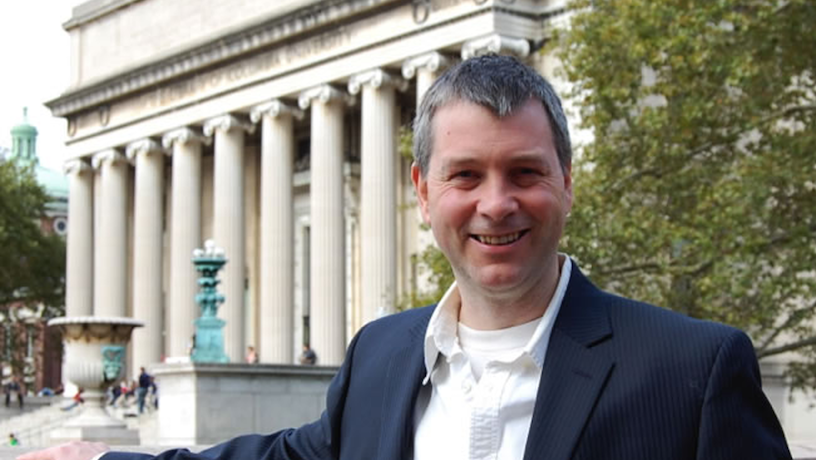James Hone Wins APS Prize for Work on Graphene
Hone and his co-winners discovered graphene’s “insulating cousin.”

James Hone
The American Physics Society selected James Hone, the Wang Fong-Jen Professor of Mechanical Engineering, as a winner of its 2023 James C. McGroddy Prize for New Materials for his “seminal contributions to the synthesis and assembly of high quality 2D materials and their heterostructures.” This prize is awarded annually in recognition of outstanding achievement in science and application of new materials, according to the Society.
Hone is currently chair of the Department of Mechanical Engineering at Columbia Engineering and Associate Director of Columbia’s Materials Science and Engineering Center (MRSEC). He and his fellow award-winners are recognized for developing techniques to assemble one-atom-thick materials into layered ‘stacks’ known as van der Waals heterostructures.
While studying the electrical properties of graphene — a single-atom-thick layer of carbon — Hone and colleagues at Columbia searched for a material that would act as an atomically flat, insulating substrate that would protect the graphene from external disorder. They identified another material similar to graphene — hexagonal boron nitride — as the most promising candidate. They obtained high-quality crystals from two researchers in Japan (co-winners of this year’s Prize), and developed a technique to pick up a single layer of graphene and place it on a thicker flake of boron nitride. After connecting electrical leads, they found a big improvement in the graphene’s electrical conductivity relative to other substrates.
“We think of boron nitride as graphene’s insulating cousin, and it forms the ideal environment for graphene and other two-dimensional materials,” says Hone, who was also elected a 2022 APS fellow, cited for his "pioneering studies of two-dimensional materials and van der Waals heterostructures, including introducing hexagonal boron nitride as a complementary dielectric for graphene, and developing the methods used to created layered van der Waals heterostructures."
Since this first demonstration in 2010, the Columbia team has continuously improved the ‘stacking’ process to maximize device quality and reveal successively richer physical behavior in graphene. They and researchers across the world are using the same technique to assemble a wide variety of atomically thin materials into ‘van der Waals heterostructures’. The study of these heterostructures is at the forefront of materials research today.
